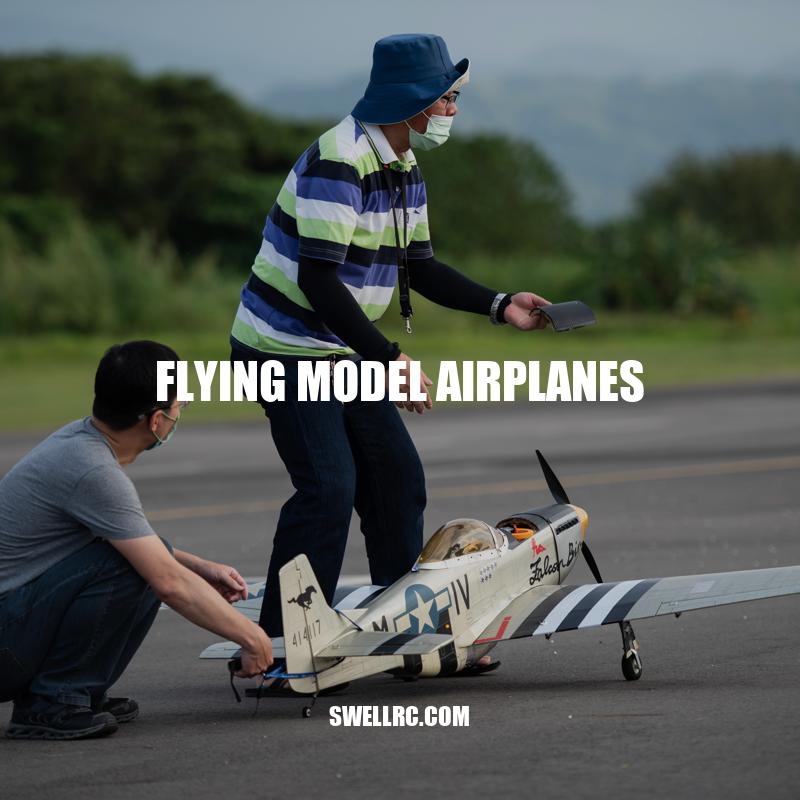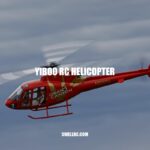Exploring the World of Flying Model Airplanes
Flying model airplanes is a beloved pastime for many aviation enthusiasts. From miniature replicas of vintage planes to advanced remote-controlled helicopters and drones, the hobby has evolved and grown in popularity over the last century. While some may see it as a child’s toy, flying model airplanes require skill, precision and knowledge of mechanics and aerodynamics. In this article, we will explore the history of flying model airplanes, the different types of models available and why it continues to be such a beloved hobby for enthusiasts worldwide. Whether you’re a seasoned model airplane pilot or new to the hobby, there is something for everyone to enjoy in the world of flying model airplanes.
The History of Flying Model Airplanes
Flying model airplanes have been around for over a century, and the technology has evolved significantly over time. Here are some key points in the history of flying model airplanes:
- In the early 1900s, hobbyists started building miniature replicas of aircraft that they launched from the ground using a rubber band.
- The hobby became more advanced with the introduction of gas-powered engines in the 1930s.
- During World War II, model airplanes played an important role in military training and development of new aircraft.
- In the 1960s and 70s, new materials such as fiberglass and balsa wood led to major advancements in model airplane design.
- In the 2000s, the advent of electric motors and lithium batteries made remote-controlled airplanes more efficient and accessible.
- Today, flying model airplanes are more popular than ever, with a wide variety of models and competitions available for enthusiasts.
For those interested in learning more about the history of flying model airplanes, there are many great resources available online such as the Academy of Model Aeronautics (AMA) and the National Model Aviation Museum, which houses a collection of historical aircraft models and artifacts.
When did the first model airplane fly?
The first model airplane flew in 1871, built by Alphonse Penaud. It was a rubber-powered plane with a wingspan of only 18 inches. This early flight demonstrated the potential for model aviation as a hobby and inspired others to experiment with aircraft design. For more information on the history of model planes and tips for building your own, check out websites like Model Airplane News and the Academy of Model Aeronautics.
Types of Flying Model Airplanes
There are many different types of flying model airplanes, each with its unique design and purpose. Here are some of the most popular types:
| Type | Description |
|---|---|
| Trainer Planes | Designed for beginners, these planes have easy-to-control features and forgiving flight characteristics. |
| Sport Planes | Designed for aerobatic maneuvers, speed, and performance, these planes require more skill and experience to fly. |
| Scale Models | Exact replicas of real planes, these models are often highly detailed and painstakingly crafted to look like their full-size counterparts. |
| Gliders | Non-powered planes that use wind and thermals to stay aloft, these planes are great for slope soaring and thermal hunting. |
| Helicopters | Unlike airplanes, helicopters can hover and fly in any direction, making them versatile and challenging to fly. |
Interesting facts about flying model airplanes:
- The world’s largest remote-controlled airplane has a wingspan of 36 feet and weighs over 300 pounds.
- Remote-controlled airplanes were used in World War II for target practice and training purposes.
- There are numerous international organizations and competitions for remote-controlled airplanes, including the Fédération Aéronautique Internationale (FAI) World Championships and the International Miniature Aerobatic Club (IMAC) competition.
For those interested in flying model airplanes, there are many websites, forums, and resources available online. The AMA and RCGroups are popular websites that offer a wealth of information on model airplane flying, building, and competition. Additionally, there are many online retailers that specialize in remote-controlled airplanes and accessories, such as Horizon Hobby and Tower Hobbies.
Do model airplanes fly?
Yes, model airplanes can fly. However, it depends on the type of model airplane and how it is designed and built. Here are some examples:
| Type of Model Airplane | Flying Ability |
|---|---|
| Rubber-Powered Models | Can fly up to 100 feet or more, but require outdoor space and may be affected by wind conditions |
| Electric-Powered Models | Can fly indoors or outdoors for shorter distances, typically up to a few hundred feet, and can perform aerobatic maneuvers |
| Gas-Powered Models | Can fly longer distances up to several miles, reach higher altitudes, and perform complex maneuvers, but require more skill and experience to operate |
Some popular websites for purchasing model airplanes and related products include:
- HobbyKing
- Tower Hobbies
- Horizon Hobby
- Amazon
- eBay
Overall, model airplanes can provide a fun and educational experience for hobbyists of all ages, as well as serve practical purposes such as aerial surveillance and research.
Conclusion
Flying model airplanes is an exciting and fulfilling hobby that can be enjoyed by people of all ages. Whether you’re a seasoned hobbyist or a beginner, there are many types of planes to choose from to fit your skill level and interests. With the availability of various online resources and retailers, getting started in this hobby has never been easier. From building and flying to competing, there is something for everyone in the world of flying model airplanes.
As you begin your journey into the world of remote-controlled planes, remember to always prioritize safety. Always read and follow the instructions that come with your planes, and never fly in unsafe weather conditions or crowded areas. With patience, practice, and proper safety precautions, you can enjoy the thrill of flying model airplanes and experience the joy that this hobby brings.



